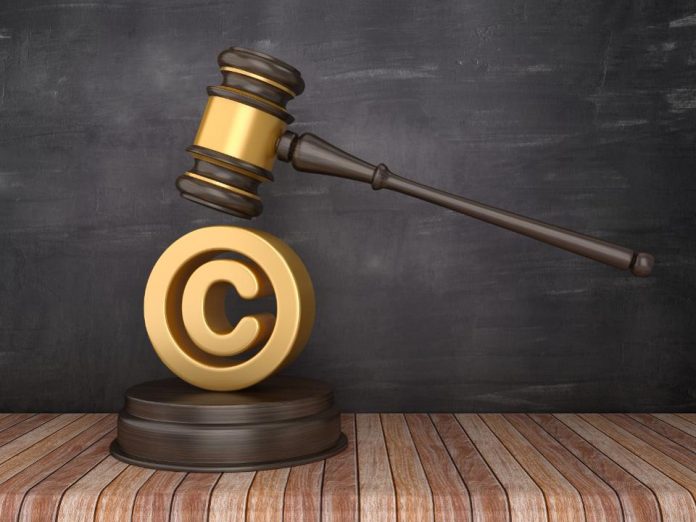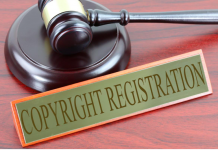This article is written by Priyanka Sharma, student of O.P. Jindal Global University, Sonipat.
Table of Contents
Introduction
Parody is something that while intricating an element of humour, it makes a critique on any already existing work and comments on the flaws of it in a way that is entertaining to its audiences. Parody, as a humorous kind of criticism, has been used by many comedians, YouTubers, bloggers and actors, since long to communicate a particular message or a point of view to entertain their audience. Today, there are a lot of youtubers who are earning huge fortune of a money only out of the career they have built by making parodies. But parody, since it is a commentary on somebody else’s work, it certainly involves the use the original work to do so. And the conflict that arises is that copyright law grants authors of original work certain exclusive rights and parody in a sense turns out to be a violation of such rights.
The underlying objective of granting copyrights is “to maintain a balance between claims made by authors of original work and appropriate protection to the intellectual property to encourage further creative initiatives”. Hence, the copyrighted work can also be used by third parties to add their enhanced creativity onto it – This is what forms the basis of the exception of fair use. But it is not that vanilla case as it seems to be. To attract the exception of fair use, it needs to satisfy specific conditions, which are not always easy to assess.
Specific Conditions
Any person who has used the copyrighted work is required to satisfy a “Four Factor Test” to avail the benefit of fair use. The first consideration is, the purpose and character of the use of the original work. Second factor is the nature of the original work and the extent to which it is covered under protection by copyright. Another major point is to take into account the amount and substantiality of the portion of the work that has been copied or used. Also, it is to be seen that what impact such use will have on the market of the original work.
Is a satire given the same position as a parody?
Under Indian laws with respect to copyrights, parody and satire are treated the same. This is not the case with judgements in the foreign jurisdictions.
To know more about Copyright please visit
In the US, the courts have distinctively placed parody and satire for the purpose of copyrights and therefore this distinction also affects their application of fair use respectively. In the case of Campbell v. Acuff-Rose Music, Inc (1994), it was held that “Parody needs to mimic an original to make its point, and so has some claim to use the creation of its victim’s imagination, whereas satire can stand on its own feet and so requires justification for the very act of borrowing.” Parody, in words of the court, was referred as, “Second work by a different author that imitates the characteristic style of the first author … to ridicule or criticize the copied work.” But, satire was differentiated as a work wherein “prevalent follies are assailed with ridicule or attacked with irony, derision or wit.” This case made it clear that the claim of fair use can be granted to a parody, but for a satire, it is not justified.
While talking about the Indian scenario, the Delhi High Court dealt with an interesting case in 2020 regarding a web series named ‘Hasmukh’ which was released on Netflix. Hasmukh played the role of a stand up-comedian in the series and during one of the episodes, he faces a disappointing experience with a lawyer and following that, he makes certain comments against the lawyers community.
Following this, an advocate went ahead to file a suit against the web series ‘Hasmukh’ before the Delhi High Court, asking for a stay against further airing the web series on the ground that in that particular episode, derogatory comments have been made attacking the legal profession, and it is too far from being funny or a satire.
The Court while denying to grant injunction order against the web series, commented on the nature of satire as ‘being a tool to criticise a particular subject or character to the point of ridicule.’ The Court defined satire as ‘a literary work which uses wit and irony and indulges in an exaggerated portrayal of a subject’. Also, it was highlighted that when stand-up comedians and other such artists put forward a satire to highlight a point of view, the audiences do not view such comments or jokes made as statements of truth but very well acknowledge that it is an exaggeration used for throwing light over certain ills.
Thus the courts in India have recognised both satire and parodies as a work of art.
What is the standard of Fair use?
Section 52(1)(a)(ii) of the Copyright Act, 1957 covers parody as a category of works as section 52 provides for ‘criticism or review, whether of that work or any other work.’ But this is not a plain vanilla case. The conflict begins the moment it is required to be proved that the second work is a parody and not a violation of the rights of the copyright holder. In order to include a work under the ambit of a parody, primarily two conditions are required to meet the standard of fair use, which were highlighted in the case of Blackwood and Sons Ltd. & Ors. v. A.N. Parasuraman & Ors. (1959).The first factor is that by creating such a work, the intention was not to compete with the copyright holder and impact the market of the original work. The other point is that, there should not be an ‘improper’ use of the copyrighted work.
The first test basically says that, if it is proved that the work does not impact the potential market of the original work and the parody and the original work target to two different category of audiences, then it meets the market substitution test. This is really complex to determine because one is not really sure if the division of the audiences can be done in the way that this rule entails to be done. It won’t be that effective even if the court makes a check on the commercial profits made by the parody to see if it has has competed with the market of the original work or not.
Interestingly, a research was conducted in the year 2013 by the university of Bournemouth under the lead researcher Dr Kris Erickson, which presents a completely opposite view on the market substitution test. In the research, it was found that amateur parody videos on YouTube can lead to increased views and popularity for the original, instead of harming their market. The study was conducted to assess the economic effects that a parody has on the original work’s market and thus to check the impact of parody videos on the original works. The study concluded that the artists of the original work could actually benefit from the parody videos. Instead of economic harm through substitutability or reputation, the presence of parody content was correlated with larger audiences for original music videos, especially for those works who had low sales before the coming of their parody.
To cater to the complexities that could arise in the first test, the courts have come forward with the “Transformative Work” Test. The case of Campbell v. Acuff Rose Music also laid down the transformative test. In this case, the US Supreme Court held that to decide that whether copyright can be granted to a parody in terms of fair use, the level and extent of transformation in the new work is to be assessed. This test was acknowledged as relevant and from then onwards it was understood that if a parody has sufficiently transformed itself from the original work, it would be entitled to fair use. But again, there is no definite standard that was set as to what will be able to meet the required “transformation” and so it is nonetheless under the court’s discretion on a case to case basis.
An interested case in the year 1998 was Leibovitz v. Paramount Pictures Corporation. Leibovitz, a renowned photographer, clicked a photograph of Demi Moore, an actress, while she was pregnant. In that photograph, she was shown nude with intense facial gestures. There were specific features of the photograph like the body posture and position, type of lightning, etc. Now the dispute arose after Paramount pictures, some-time after the photograph of Leibovitz, came out with a photo of Leslie Nielsen actress, wherein they implied the similar concepts as those used in the Demi’s Moore’s picture. Paramount pictures actually used the photograph of a pregnant woman who is naked as well, plus which was shot using same kind of lightning, body posture, etc. but they superimposed the ‘smirking’ face of Leslie Nielsen in that photograph in place of the face of that woman.
Now, the court had to decide on the issue that whether this can be construed as a transformative work or not. The court decided that Paramount’s use of the naked pregnant woman’s photograph was transformative as it has not merely copied the work but has made an addition by way of a ‘comic effect or ridicule’. So the comic effect added to the already existing photograph, was considered to have met the standard of transformation. The court also stated that Leslie Nielsen’s photo with a smirking expression, presents a contrast with the serious expression of Demi Moore which could be viewed as commenting on the ‘pretentiousness’ of the original photograph.
In an Indian case regarding the cinemas, R.G. Anand v. M/s Deluxe Films (1978), the Supreme Court held that “Where the theme is the same but is presented and treated differently so that the subsequent work becomes a completely new work, no question of violation of copyright arises.”
Even if the court in above cases have liberally applied the transformative test if there is a use of comical effect on the original work, as we saw in the case of the pregnant woman photograph, however, it does not implies that anything under the sun becomes a parody simply because it involves there an element of humor. If it is discovered that the defendant has tried to take advantage of a reputed work only to make commercial gains by simply involving some humor in the work,then such a work can be denied the defence of parody. There is a grey area. This takes us to the superman logo case of US In 2015. The defendant was an apparel company who had used the iconic Superman shield design on its apparels. The T-Shirts displayed the word “Dad” styled in a superman logo. The defendant claimed that their SuperDad T-Shirts were a clear parody of the famous Superman logo and so there is no possibility of the consumers being getting confused between the two. They also tried to defend their position by claiming that the term ‘Dad’ has been used to show Superman’s ‘undue self-importance’.
The judge did not agree with the contentions of the defendant and held that although the defendant’s use of the word Dad is an element of humour, its purpose is only to promote their t-shirts using the famous logo of the plaintiff, and this cannot be protected as a parody.
This case gives us two major takeaways. First outcome is that a work can be entitled to the defence of parody only if it is not of such a confusing nature that the consumers are misperceived of the source of the work and fail to differentiate between the original work and that of the defendant. Secondly, it can be observed that a parody has to be something more than being just humorous. This is crucial when the work of the defendant is purely commercial. Some commentary on the original work is safer rather than just being funny. It is also important to note that such a commentary must be meaningful to have the defence of fair use and transformation so that it does not give an impression of being just a formality that has been incorporated merely to use someone else’s already reputed work to boost own sales.
Conflicting issues with right to integrity
Moral Rights are inalienable rights that are granted to an author of a copyrighted work. They include the right to paternity, i.e. the right of the author to have the work attributed to him and the right to integrity.
Moral Rights were a part of article 6bis of the Berne Convention in 1928. Section 57 of the Copyrights Act, 1957 bestows moral rights to the copyright holders which grant protection against any act of distortion, mutilation, modification, or any other untoward act done to the original work of the copyright holder. Also, right to integrity is provided for under section 57, where acts which prejudice the honor or reputation of the original work are prohibited.
Well, in a way, a parody enters into a direct conflict with the moral rights of the author of an original work because majorly, it is created by performing some kind of poking and ridiculing of the original work. It is basically a kind of mocking of the work of the copyright holder. This is where the need for the second test to claim parody as fair use arises. It is understood by now that in order for the defense of fair use to be successful for a parody, the defendant needs to prove that the original work has not been used in an ‘improper’ manner. But the test becomes quite unclear and complex because there no clarity of definition of the word ‘improper’ and as to what standards it implies.
If we see the side of the parodist, then there are claims with respect to freedom of speech and expression, and if we see the side of the copyright holder, then there is a claim over his right to dignity over his work. It is to be understood that the right to freedom of speech and expression is not something absolute which cannot be controlled. It comes with its own constraints. This would imply that a parodist must not mock or interfere with the work in such a manner that can bring discredit to the author of the original work.
Again, how to draw this distinction is a matter of judgment which will be determined by the courts on a case-by-case basis. In this regard, “The line of Creativity” principle comes in handy and is often used by the courts. This principle as the name suggests, seeks to draw a balance between the parodist’s use of creative ideas and expressions to criticize and mock the copyrighted work, and, the insult or humiliation that is intended towards the holder of the copyrighted work It is the part of the courts to enquire into this line. But while delving into such an inquiry, it is important that the courts draw a distinction between harmless humor and an intention of causing injury to the reputation of the author.
A big development in this regard took place in the case of Charleston & Smith vs. Newsgroup Newspaper Ltd (1995) where the ‘bane and antidote test’ has been laid down by the Supreme court in Australia. The rule that this test brought out is that, if any defamatory text or a picture comes along with a disclaimer stating that the work has been used and intended only for humour purposes, then it must be considered only for innocent humour purposes and nothing more than that.
Conclusion
With a boost in emerging careers in the field of actors, stand-up comedians, vloggers and bloggers, the exploitation of copyrighted works, without the knowledge or consent of the author, has become more like of a common social practice. This is all being done frequently under the guard of a joke or a parody and this is what the audiences want to watch and enjoy. A huge number of these contents hurt the moral rights of copyright holders and are objectionable and insulting. Also, people use fair use defense for works that are mainly created to earn commercial gains. Today, it is the age of digital India and such violations must be regulated so that the creators of original work feel incentivised and continue to express more artistically. The creators of original works must not be held back due to lack of incentives and lack of protection. The different tests contemplated by the courts should be applied strictly so that the line of creativity is always maintained.
LawSikho has created a telegram group for exchanging legal knowledge, referrals and various opportunities. You can click on this link and join:
 Serato DJ Crack 2025Serato DJ PRO Crack
Serato DJ Crack 2025Serato DJ PRO Crack











 Allow notifications
Allow notifications



